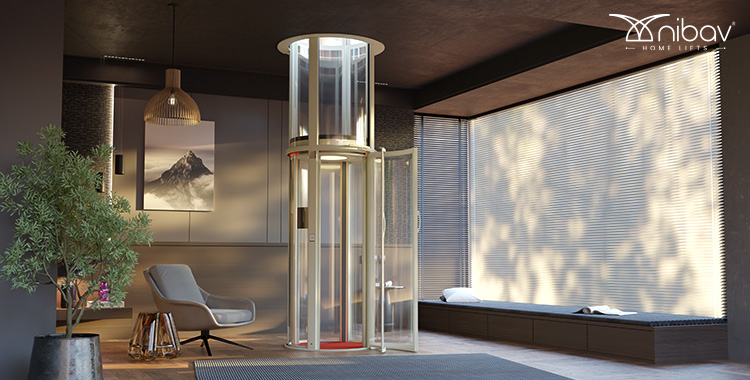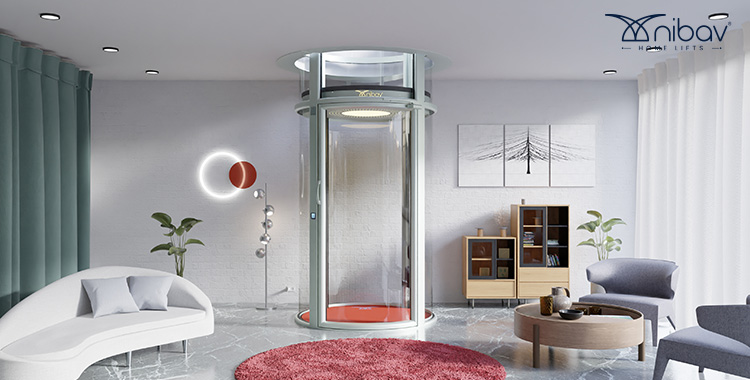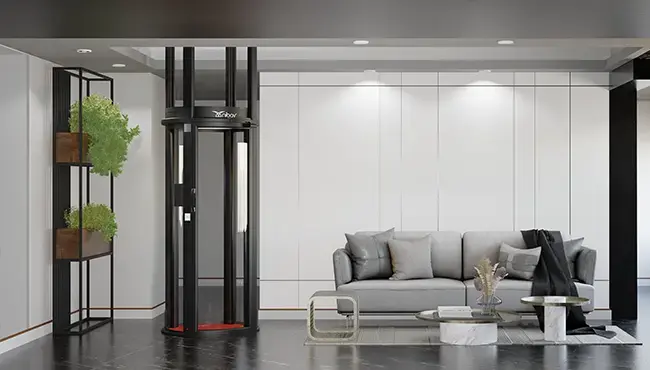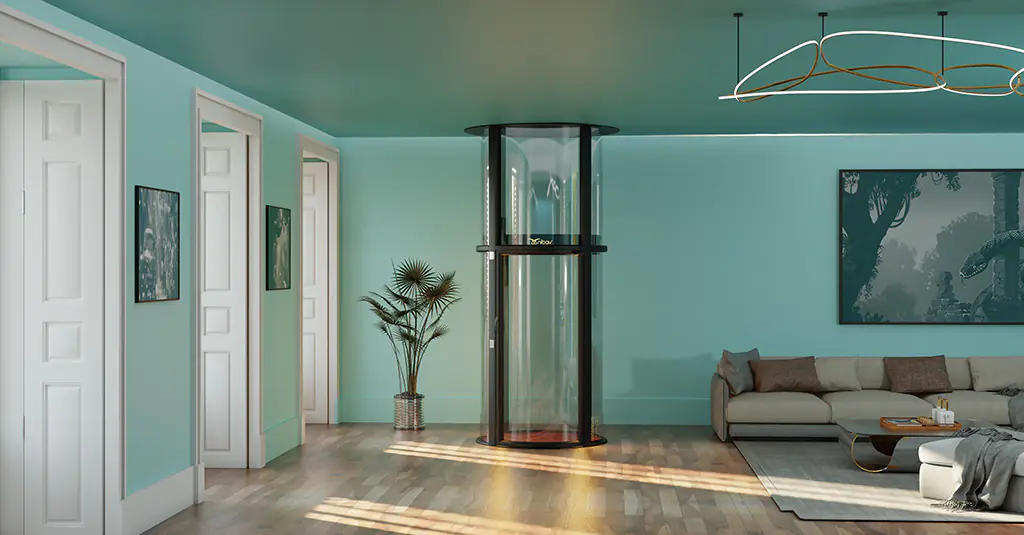
Table of Contents
Adding a home elevator is a step which is likely to enhance the comfort and accessibility of the home. However, prior to investing in one, it is important to consider existing factors that are likely to influence the house elevator cost. The determination of house elevator costs includes a number of factors ranging from the type of elevator installed to installation of special features and accessories. In this blog, we shall examine these issues in a simple and clear manner using common language as much as possible so that it makes sense in decision making.
1. Type of Home Elevator
There are several types of home elevators, each with its own installation process, maintenance requirements, and, of course, price range. The main types are:
- Hydraulic Elevators
Hydraulic elevators operate by pushing a piston with hydraulic fluid, lifting the elevator car. These are generally more expensive due to their complex systems but are known for their smooth and quiet ride. They also tend to require a machine room, which adds to the installation cost. If you’re considering a hydraulic elevator, expect a higher home elevator cost upfront. - Traction Elevators (Cable-Driven)
Traction elevators use cables and counterweights to move the car. While they can be less expensive than hydraulic elevators, they may require more maintenance over time. Traction elevators are usually found in larger homes, and their costs can range widely depending on how many floors you want to serve. - Pneumatic Elevators
These modern, tube-like elevators are powered by air pressure. They are compact, energy-efficient, and don’t require a machine room, making them a good option for homes with limited space. Although they are easier to install, the home lifts price for pneumatic systems tends to be on the higher end due to their unique technology. - Vacuum Elevators
Similar to pneumatic elevators, vacuum elevators use air pressure to move the lift. These elevators are usually smaller and don’t require complex construction or machine rooms, making them a great choice for retrofitting an existing home. However, the cost can still be substantial.
2. Number of Floors
The more the number of floors in a building, the higher the house elevator installation cost. It will be professionally done at lesser costs if you live in a two story. The reason for the increase of cost in perfecting the functioning of the home lifts is that added floor means added more materials, labor and sometimes more advanced equipment.
- Two-Storey Home: On average, houses of up to two stories are still relatively normal housing without an elevator.
- Homes with Three or More Floors: Once again, once your own house is 3 or more stories tall, expect to pay the most. The prices may depend on the nature of the lift and modifications you wish.
3. Customization and Aesthetic Features
All home destination elevators are manufactured in different ways, and exactly how many alterations you wish to make will affect your home lifts price range. Customization into the design includes:
- Cabin Materials Every elevator has a cab, which is the enclosure of the carriage/gondola and is insulated using wood, stainless steel, glass or any customized finish which is possible in the elevator architecture. A conventional bare-bones compartment would be considerably less expensive than a fully fitted and thoroughly tailored capsule with expensive finishes. Where aesthetics come in, they should also prepare for step increments in rate.
- Lighting and Flooring Lighting comes as an added feature in each elevator and different categories of internal lighting fixtures may be installed such as for instance LED lights, decorative lights or recessed lights in the walls. Instead, including styles of tiles, wooden floors; even carpets can be done as per the customer’s demands. The complex of the design, the cost will also be expensive
- If the homeowner is comfortable, for instance, some of them like to have a control panel that is designed to be simple and presentable such as touch screens with unique designs and some prefer the old styles. The price of these control options may also contribute to the home elevator cost.
4. Installation Complexity
- Installation process of the house elevators is of particular importance when it comes to determining the house elevator cost. For instance if the residence has an already provision which includes a shaft or simply earmarked area for such uses then the process will not be too involved and would not cost much in installations.
- On the other hand, if your home was not originally intended to have an elevator, there may be a lot of renovation to do in order to install one. You may have to carry out some level of reconstruction on the house which will raise the price.
5. New Build vs. Retrofit
- Building a new house with an elevator system is always cheaper than adding one to an already existing house. This is because in the new structure the space provision of the elevator will be done before construction relieving the building of unnecessary expenses. In contrast, retrofits usually require a lot of work like erecting a shaft, changing room arrangements and other forms of structural work which will affect the overall costs.
6. Home Size and Layout
In terms of installing an elevator, the cost will be influenced by the space requirements and the type of the house. And if it’s difficult to find the extra space, which is likely in a small apartment, a special compact or built-in lift may be needed, which presumably raises the expenses. But if there is enough scope in the residence, perhaps it will be easier and less expensive if they go for standard elevator installation.
- Compact Homes: Compact or weirdly protruded homes may use special home lifts to accommodate the configuration and such specializations take the overall home lifts price to a higher level.
- Large Homes: Bigger houses may be more lenient on the space and the elevator size and type, however, the other floors and the internal remodeling aspects may still be a burden to the pocket.
7. Labor and Installation Costs
The main factor affecting the final price other than the price of the elevator itself will be the labor expenses. Labor costs depend highly on the location and quantity of work to be done. Above all, let’s assume residential buildings are being constructed in countries where the costs of labor are high, installation prices will be usually greater than the countryside areas. Even more, if you are going for a rather intricate type of an elevator system that has to be compiled with some level of expertise, you are likely going to look for professionals, which in turn raises the cost of labor.
8. Costs of Building Permits and Inspections
- You should also remember that the installation of home elevators often occurs once appropriate building permits have been acquired since the site will be inspected to ensure that the building is within code. These other processes may increase your costs but are critical in ensuring that the elevator works as it should.
9. Maintenance Costs
Once installed, elevators need to be serviced on a regular basis in order to keep them in good working and safe condition. Depending on elevator technology these inspections are needed only once a year or twice a year. Maintenance practices, for instance, the hydraulic elevator, may need to take place within a shorter duration because of its complexity.
- Warranties: A number of manufacturers of elevators have such warranties which caters for most of maintenance activities for the initial few years thereby decreasing total cost of maintenance. Nevertheless, after this period of time once the warrant period has ceased to exist then that is when preventive maintenance initiatives are to be implemented that comes with a cost of having an elevator.
10. Energy Efficiency
Costlier in the initial stages, energy-efficient elevators are worthwhile investments since they help save a lot on utility expenses after some time. As for example, Pneumatic or vacuum elevators are likely to be much more energy efficient than conventional traction or hydraulic elevators. When it comes to home elevator cost, it makes sense to include future savings due to using energy saving solutions.
11. Technology and Smart Features
Nowadays, elevators have various intelligent features that can add either value or safety, as the case may be. Such as, automatic controls, surveillance systems, smart home connectivity etc. While these systems enhance the functionality of your home elevator, it also raises the cost of home lifts. However, be ready to reach deep into your pocket for fully connected, smart and elevator systems.
End Note:
Home elevators are available in a wide price range based on various aspects such as the kind of elevator chosen, number of floors, intricacy of the work to be done and the scope. With an appreciation of these factors, it is easier to arrive at a house elevator cost estimate and a decision that suits your house and budget. Regardless of the fact that installing a house elevator requires a lot of resources; it is a good form of making your house easier to access in the future so the expenditure is worthwhile.









